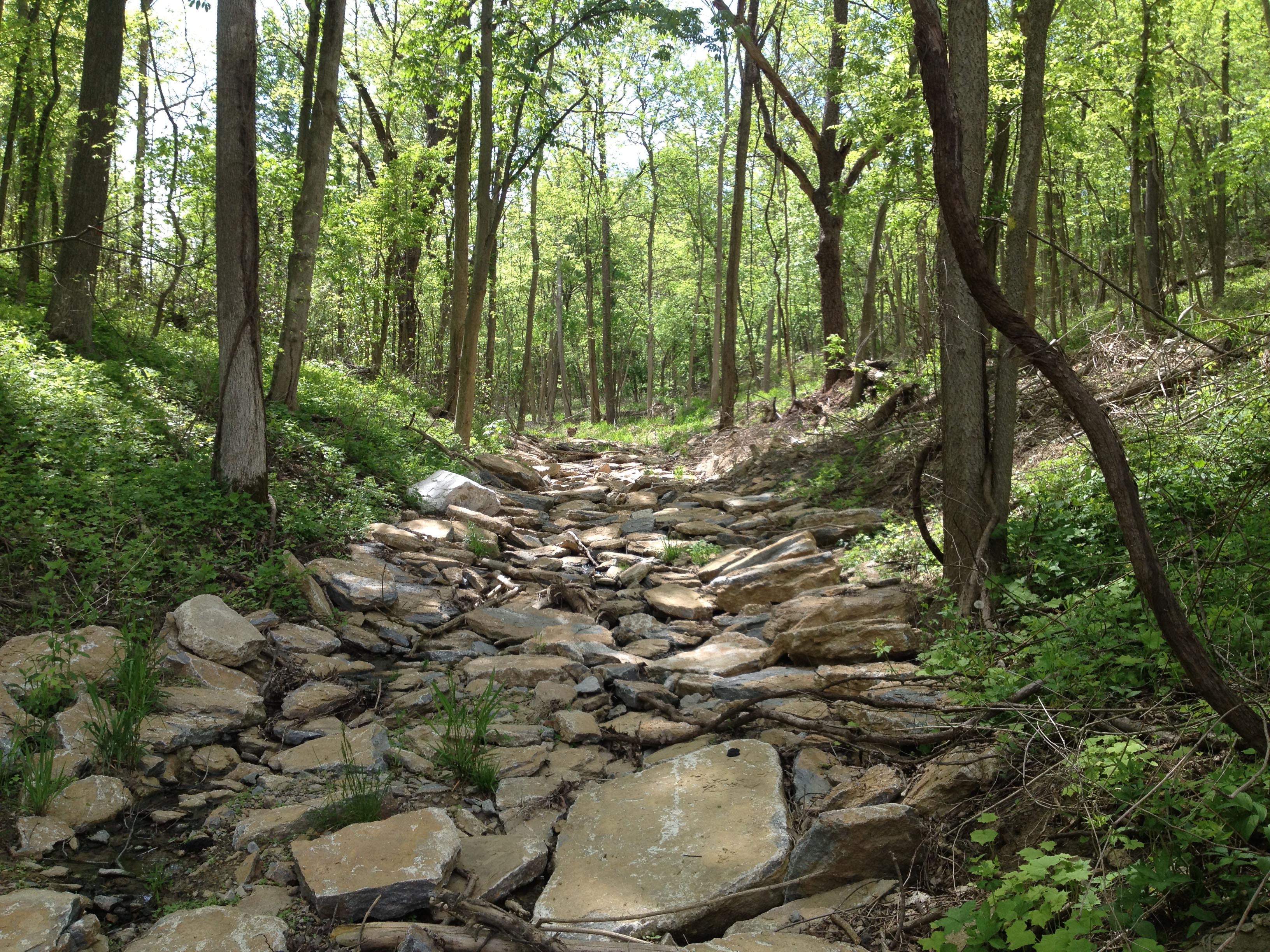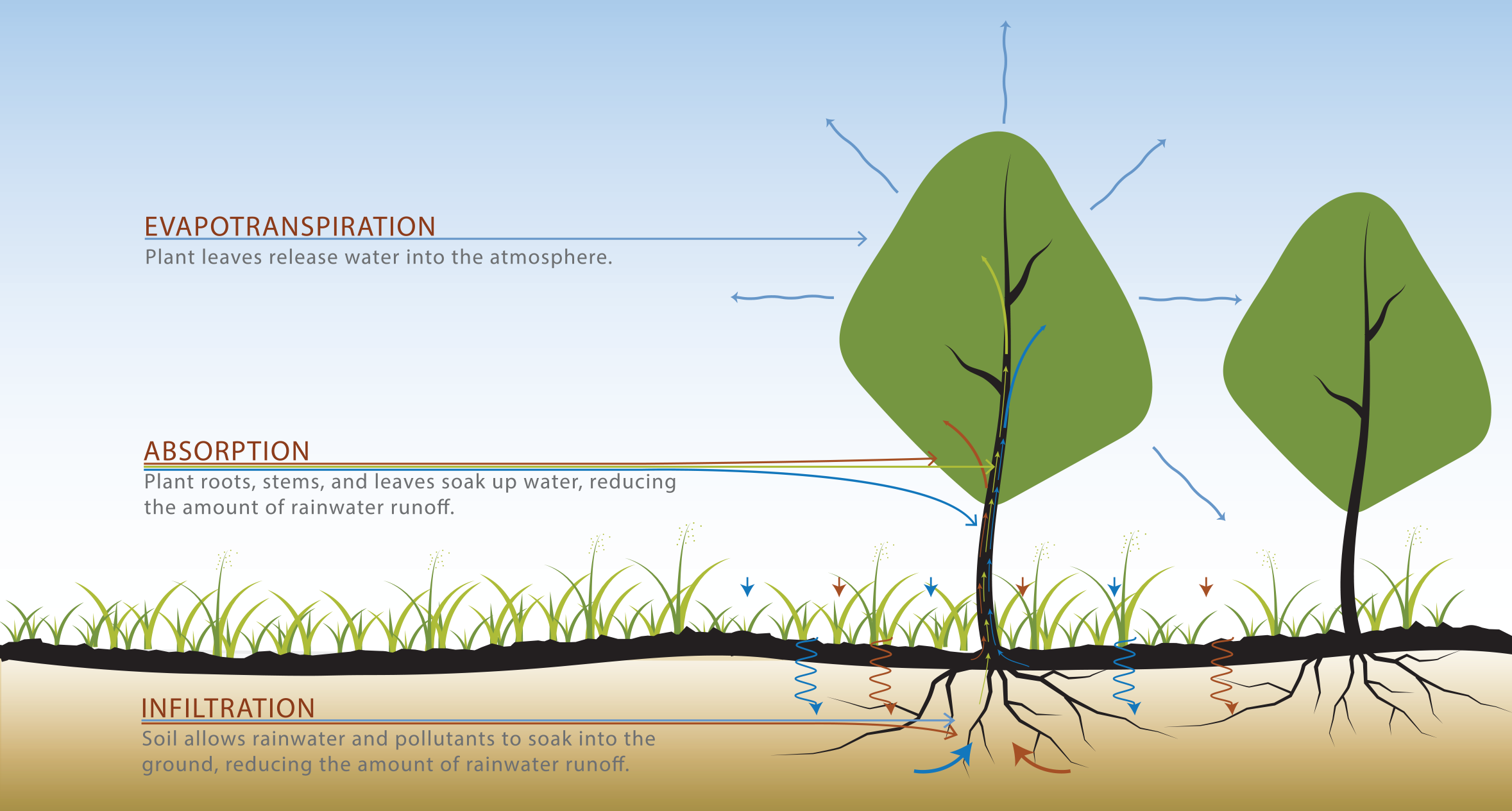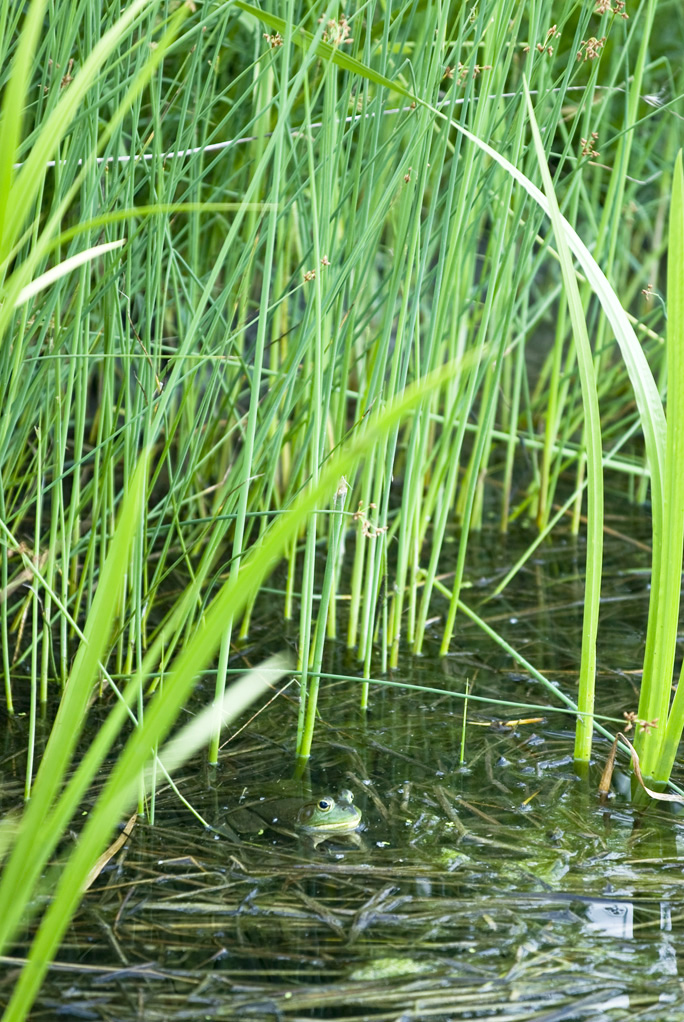Trail Location 13: Restoring a Stream Landscape

Walking Tour? VIEW THE TRAIL LOCATION IN GOOGLE MAPS >
RESTORING A STREAM LANDSCAPE
Before people began to settle here, the landscape primarily consisted of a forested valley and hillsides. A stream known as Lick Run flowed naturally through the valley to the Mill Creek. A diverse mixture of plants and animals lived in the forest ecosystem. Some of the important tree species included oaks, maples, and beeches. The forest naturally absorbed, slowed down, and filtered rain as it fell to the earth.
As settlers cleared the forest for building materials, firewood, household products, and industry, they replaced the natural landscape with crops, pasture land, and eventually buildings and roads. This caused the rainwater to run off the land much more quickly and in greater amounts than before.

As development progressed during the late 19th century, the Lick Run stream evolved from a natural stream bed to a channelized ditch. It was then enclosed in a 20-foot-diameter underground combined sewer that carried both sewage and rainwater. The stream was soon forgotten as roads and buildings were built over the top.
The Lick Run Greenway seeks to restore not only the original Lick Run stream that flowed through the valley, but the native landscape of the Lick Run stream corridor.
Thousands of plants, including trees and shrubs, have been planted in and along the Lick Run Greenway stream. The leaves and roots of trees, shrubs, grasses, and wildflowers help clean the rainwater runoff by removing sediment and absorbing pollutants. Because plants need water to survive, they can reduce the amount of runoff by soaking up water and releasing it to the atmosphere in a process called evapotranspiration. The plants also shade the stream, keeping it cooler for plants and animals in the water. Finally, native plants create habitats that are a home to a variety of local mammals, birds, insects, amphibians, and fish.



- Streams can provide a home to thousands of species - including plants, fish, amphibians, birds, and mammals.
- Some species, especially fish, snails, crayfish, insects, and salamanders, are now in danger as a result of human activity and unhealthy streams.